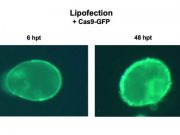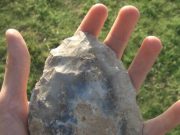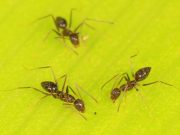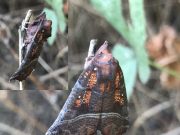Researchers find even small disturbances can trigger catastrophic storms
You've probably seen the satellite images that show a hurricane developing: thick white clouds clumping together, arms spinning around a central eye as it...
CRISPR plants: new non-GMO method to edit plants
An NC State researcher has developed a new way to get CRISPR/Cas9 into plant cells without inserting foreign DNA. This allows for precise genetic...
Scientists successfully develop ‘heat resistant’ coral to fight bleaching
The team included researchers from CSIRO, Australia's national science agency, the Australian Institute of Marine Science (AIMS) and the University of Melbourne.
Corals with increased heat...
Microscopic feather features reveal fossil birds’ colors and explain why cassowaries shine
Cassowaries are big flightless birds with blue heads and dinosaur-looking feet; they look like emus that time forgot, and they're objectively terrifying. They're also,...
Researchers trace evolution of self-control
Human self-control evolved in our early ancestors, becoming particularly evident around 500,000 years ago when they developed the skills to make sophisticated tools, a...
Astronomers find regular rhythms among pulsating stars
By listening to the beating hearts of stars, astronomers have for the first time identified a rhythm of life for a class of stellar...
Planet hunters discover new ‘one in a million’ Super-Earth
Astronomers at the University of Canterbury (UC) have found an incredibly rare new Super-Earth planet towards the centre of the galaxy. The planet is...
Ants use collective ‘brainpower’ to navigate obstacles
Ants use their numbers to overcome navigational challenges that are too large and disorienting to be tackled by any single individual, reports a new...
Moths have a secret but vital role as pollinators in the night
Moths are important pollen transporters in English farmland and might play a role in supporting crop yields, according to a new UCL study.
The research,...
Ancient rocks show high oxygen levels on Earth two billion years ago
Earth crust may have been far more oxygen-rich early in its history than previously thought, setting the stage for the evolution of complex life,...
Growing mountains or shifting ground: What is going on in Earth’s inner core?
Exhaustive seismic data from repeating earthquakes and new data-processing methods have yielded the best evidence yet that the Earth's inner core is rotating—revealing a...















